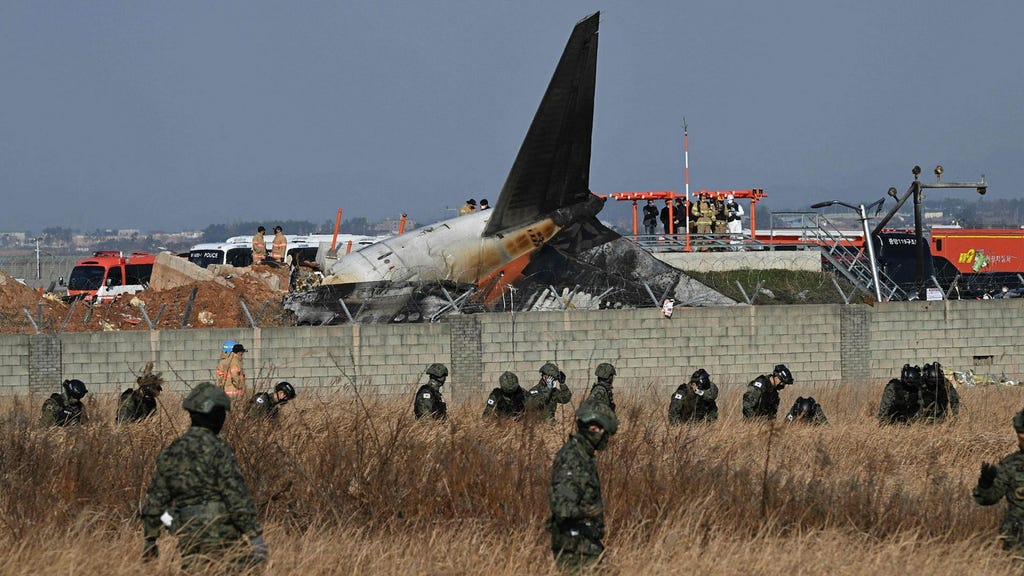Jeju Air Flight 2216: A Detailed Analysis of an Avoidable Tragedy
On a Saturday evening, Jeju Air Flight 2216, a Boeing 737-800, embarked on a seemingly routine journey from Bangkok to Muan, South Korea. However, this flight would take a devastating turn, culminating in a belly landing at its destination. Witness accounts and video footage depict a harrowing sequence of events: a suspected bird strike impacting the right engine, followed by ominous sounds and an unusually high-speed belly landing. While the initial assumption pointed to the bird strike as the primary cause, the severity of the outcome raises serious questions. Bird strikes, while capable of causing damage, typically result in minor incidents, certainly not the complete failure of the landing gear. Aviation expert Jan Ohlsson sheds light on a critical element of this tragedy – the emergency landing gear deployment system. He explains that Boeing 737-800 aircraft are equipped with a manual override system accessible through a hatch on the cockpit floor. This system allows pilots to deploy the landing gear by gravity in case of hydraulic failure. The fact that the landing gear remained retracted suggests a deliberate decision to execute a belly landing. Such maneuvers are extensively practiced in simulators and, in real-world scenarios, rarely result in fatalities. This begs the question: why was a belly landing chosen in this instance, especially given the availability of a backup system?
The Muan International Airport, established in 2007, boasts a 2,800-meter runway and is located adjacent to a body of water. The prevailing weather conditions on the day of the accident were favorable. These factors, coupled with the pilots’ experience, should have mitigated any potential risks, suggesting that this tragedy could have been averted. However, a critical design flaw at the airport played a pivotal role in the catastrophic outcome – a wall positioned near the end of the runway. Ohlsson contends that while the pilot executed the belly landing correctly, the presence of this wall transformed a survivable incident into a devastating crash. The sudden impact with the wall, following the belly landing, likely caused the significant loss of life. This raises serious concerns about airport safety protocols and the inexplicable decision to place an obstacle so close to the instrument landing system (ILS), a critical navigational aid.
The speed of the aircraft during the landing also raises concerns. While a disabled engine might restrict the use of reverse thrust for braking, the pilot could have deployed wing flaps to increase drag and reduce speed. The absence of these measures points to a possible urgency or an unforeseen complication that has yet to be fully understood. Furthermore, the presence of a wall so close to the ILS raises fundamental questions about airport design and safety standards. Runways should incorporate safety margins to accommodate unexpected events like engine failures or landing gear malfunctions.
The investigation into Jeju Air Flight 2216 must thoroughly examine the pilot’s decision-making process, including why the emergency landing gear deployment system wasn’t utilized. The placement of the wall at Muan International Airport deserves intense scrutiny. This incident exposes a potentially systemic issue regarding airport safety and the need for stricter regulations to prevent similar tragedies. The loss of life in this accident could have been avoided with proper airport planning and adherence to established safety protocols.
The circumstances surrounding this accident underscore the critical importance of comprehensive pilot training, particularly in emergency procedures. While simulator training is essential, it must be complemented by thorough knowledge of aircraft systems and a deep understanding of the factors that can influence flight safety. The pilot’s decision to execute a belly landing, given the availability of a backup system for landing gear deployment, warrants a detailed investigation. Was this a misjudgment, a result of panic under pressure, or were there other contributing factors that influenced this decision? Understanding the pilot’s rationale is crucial to prevent similar incidents in the future.
The design of Muan International Airport must also come under close scrutiny. The placement of a wall so close to the end of the runway represents a significant safety hazard. International airport design standards should prioritize clear zones at the ends of runways to allow for emergency maneuvers and potential overruns. The presence of this wall negated any chance of a successful outcome for the belly landing, essentially turning a survivable incident into a catastrophe. The authorities responsible for airport design and safety must be held accountable for this oversight.
Finally, this incident highlights the ongoing need for improvements in aircraft design and safety features. While the Boeing 737-800 is designed with multiple redundancy systems, including a backup landing gear deployment mechanism, this tragedy underscores the importance of continuous evaluation and improvement. Are there additional safety measures that could be implemented to further mitigate the risks associated with bird strikes or engine failures? Could the emergency landing gear deployment system be designed for more intuitive operation under stress? These are essential questions that must be addressed to enhance aviation safety and prevent similar incidents in the future. The loss of life in Jeju Air Flight 2216 serves as a tragic reminder of the importance of vigilance, preparedness, and a commitment to continuous improvement in all aspects of aviation safety.














